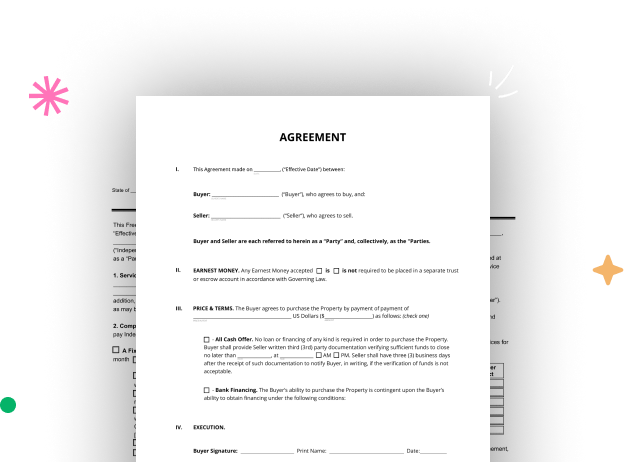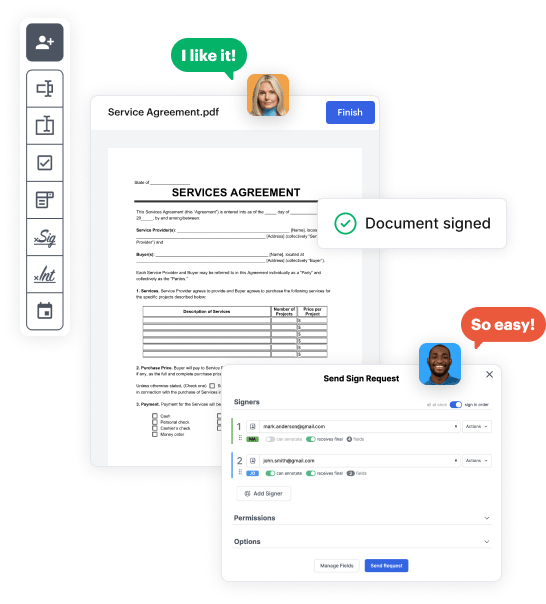

First, sign in to your DocHub account. If you don't have one, you can easily sign up for free.
Once you’re in, navigate to your dashboard. This is your primary hub for all document-related operations.
In your dashboard, choose New Document in the upper left corner. Choose Create Blank Document to create the Attorney Legal Form from a blank slate.
Place various items like text boxes, images, signature fields, and other elements to your template and assign these fields to particular recipients as required.
Personalize your form by inserting instructions or any other vital information utilizing the text tool.
Meticulously go over your created Attorney Legal Form for any errors or required adjustments. Leverage DocHub's editing tools to perfect your form.
After finalizing, save your copy. You can choose to save it within DocHub, export it to various storage platforms, or forward it via a link or email.